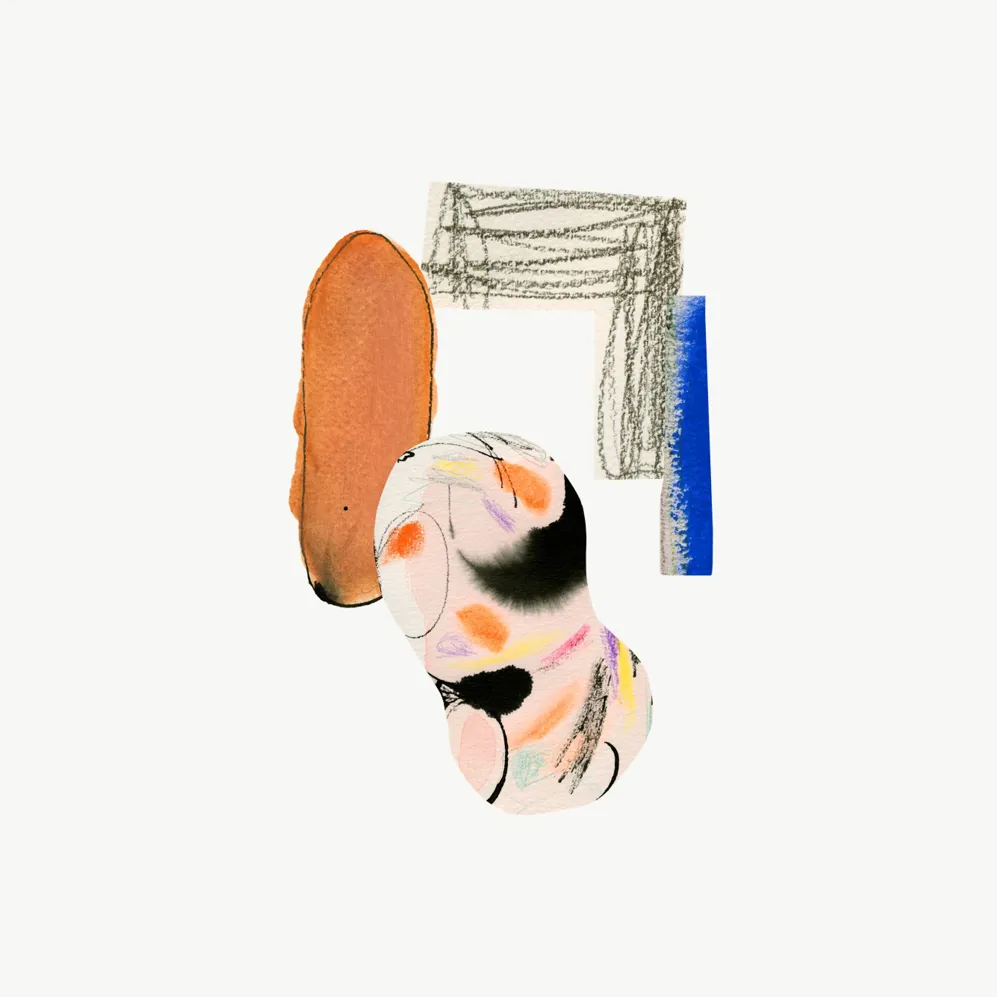
Words Jini ReddyIllustrations Linda LinkoDate 09 June 2021
Is there an able-bodied human on the planet who isn’t walking, about to go for a walk, or contemplating one? If there is a single activity that has kept us sane these past months, this is it. The renewed appetite for journeys on two feet, this travel stripped bare, has been a response to tumultuous events that have colored our horizons, as well as a vehicle through which to make sense of them. Whatever the catalyst, such pleasures have come to the forefront of our consciousness like never before. Walking has offered an escape valve, boosting our mental and physical health, and our creativity. It has been an engine of activism, empowering many, and it is vital to tackling carbon emissions. Glass-half-full types will likely agree that while a saunter or even a brisk hike may not vastly expand one’s geographical horizons in the purely linear sense, in terms of mileage covered relative to say, hopping on a plane, there is a power and luminosity to walking that deepens the self and honors the landscapes being traversed.
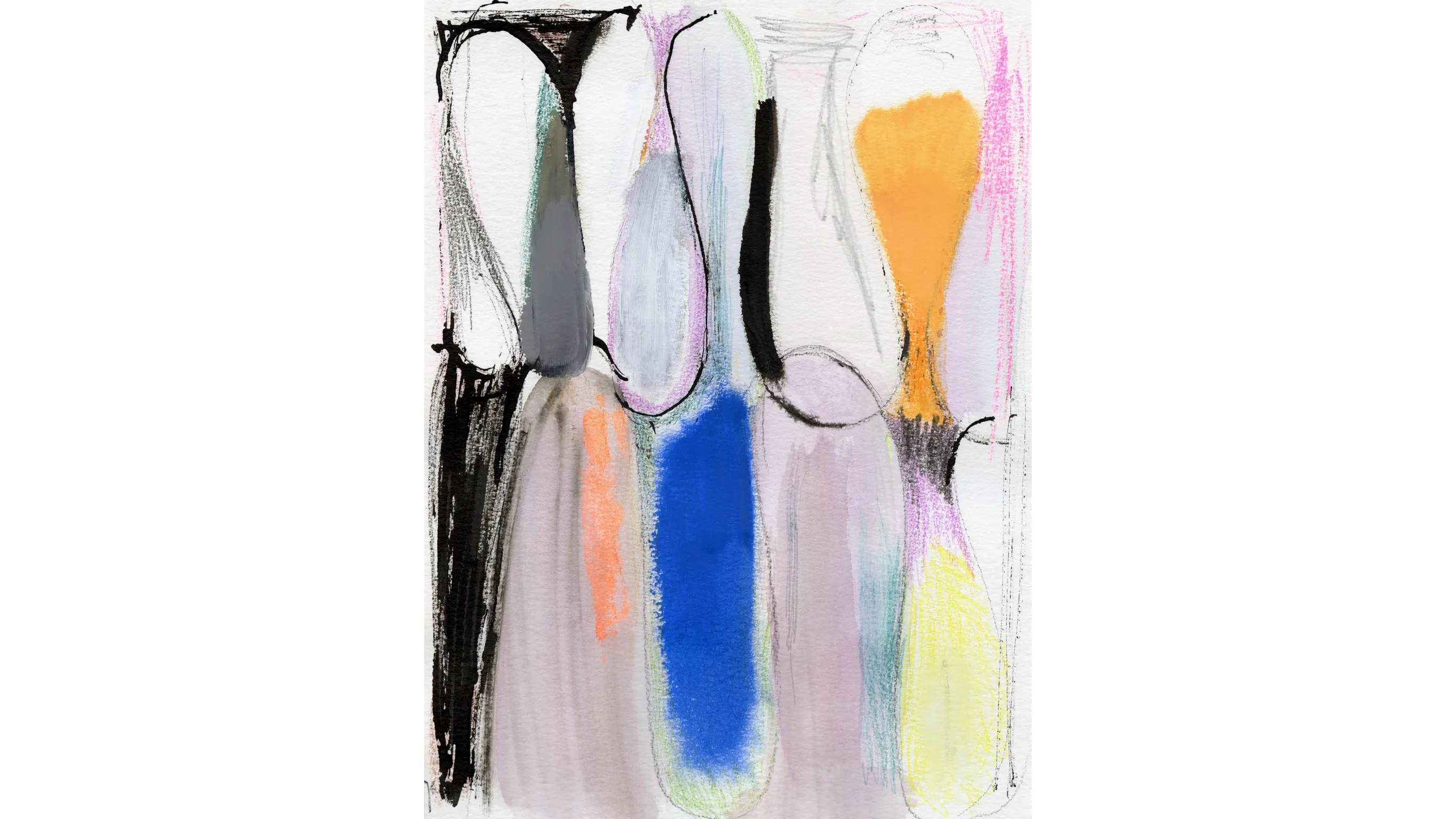
The very act and culture of walking extends back to the beginnings of humanity itself, and as Rebecca Solnit writes in her book Wanderlust: “the subject of walking is, in some sense, about how we invest universal acts with particular meanings. Like eating or breathing, it can be invested with wildly different cultural meanings, from the erotic to the spiritual, from the revolutionary to the artistic.”
Walking, then, is a part of everything and everyone. Scientists tell us that humankind first stood up on two legs seven million years ago. That’s an unfathomably long time—eons of defying gravity and an infinite number of journeys on foot undertaken by cultures around the globe, for a vast array of imperatives.
Put this to a mother who faces a daily, weary trudge for miles through heat-scorched terrain in order to collect water, or to feed her family, or ask the same question of asylum seekers who’ve been forced to traverse perilous mountain paths in a bid to reach freedom, or of a captive on a march to hell—and the very question smacks of absurdity and privilege. Perspective matters greatly. Here to be clear, we are talking about walking that is not in any way enforced or strictly a necessity for everyday survival.
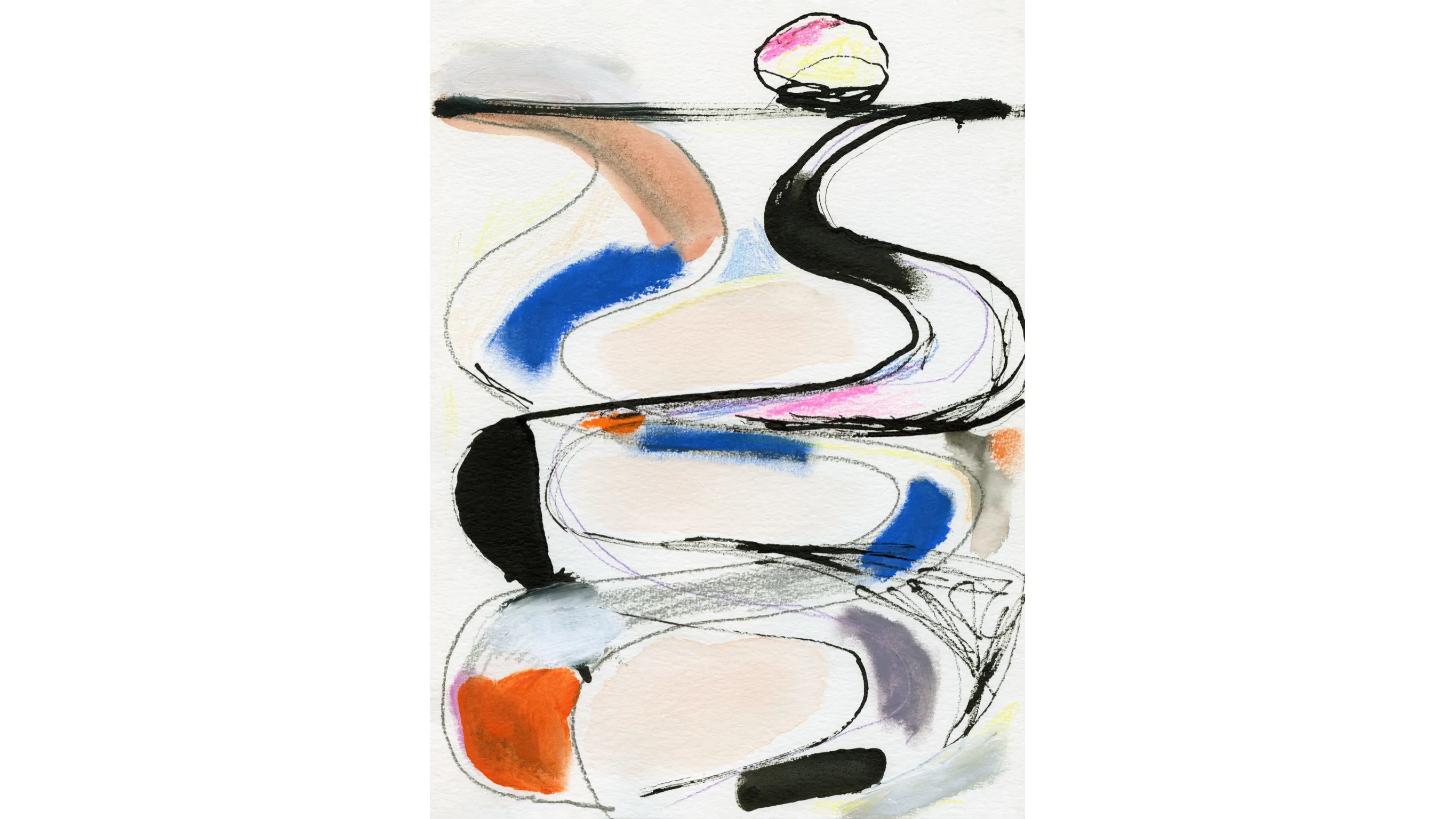
It connects us through the ages and is a metaphor—practically a cliché now—for life’s journey. On the micro level, walking is a pillar of our daily lives, and brings us into contact with non-human life, to beauty both natural and manmade, to sensory input and art both in urban and pristine natural settings.
Walking is also tinder for the imagination. It is such a universal activity that arguably any and all realms of human endeavor can be said to be the product of thoughts that arise from walking. But creative thinkers, from writers and philosophers to poets to painters, have crafted entire careers, in which wandering in and appreciating urban and wild landscapes, are at the forefront. Walking is the silent collaborator in many an artistic oeuvre and the fruits of such endeavors make rich pickings.
In ancient Greece, Aristotle founded the Peripatetic school, which linked thinking with walking. Basho, the great 17th-century Japanese poet, wandered on foot through the interior of his homeland, while the final work of philosopher Jean-Jacques Rousseau, Reveries of a Solitary Walker, was based on a series of walks that sparked thoughts on life, nature, and society.
Mountains, ancient paths, uncanny landscapes, and subterranean spaces are the muse of British author Robert Macfarlane, while the raw ingredients for ephemeral creations of land artist Andy Goldsworthy are gathered from and in nature. One long-running project of his, known as Refuge d’Art, is nestled in Provence and best viewed on a 10-day hike via ridgetop, woods, and meadows. Of it, he has written: “The purpose of the walk is to link the cairns and the valleys by foot, but also to begin the story of a walk that will be written more deeply by each person who embarks upon it.”
Travel writer Robyn Davidson found her muse while crossing the deserts of India and Australia on foot (and with camels), while in Harlem is Nowhere, African American writer Sharifa Rhodes-Pitts walks the neighborhood’s streets to learn more about its past and to get the measure of its present too. For the Romantic poets such as Coleridge and Wordsworth, walking in nature was seen as pure, a source of spiritual renewal and deep feeling.
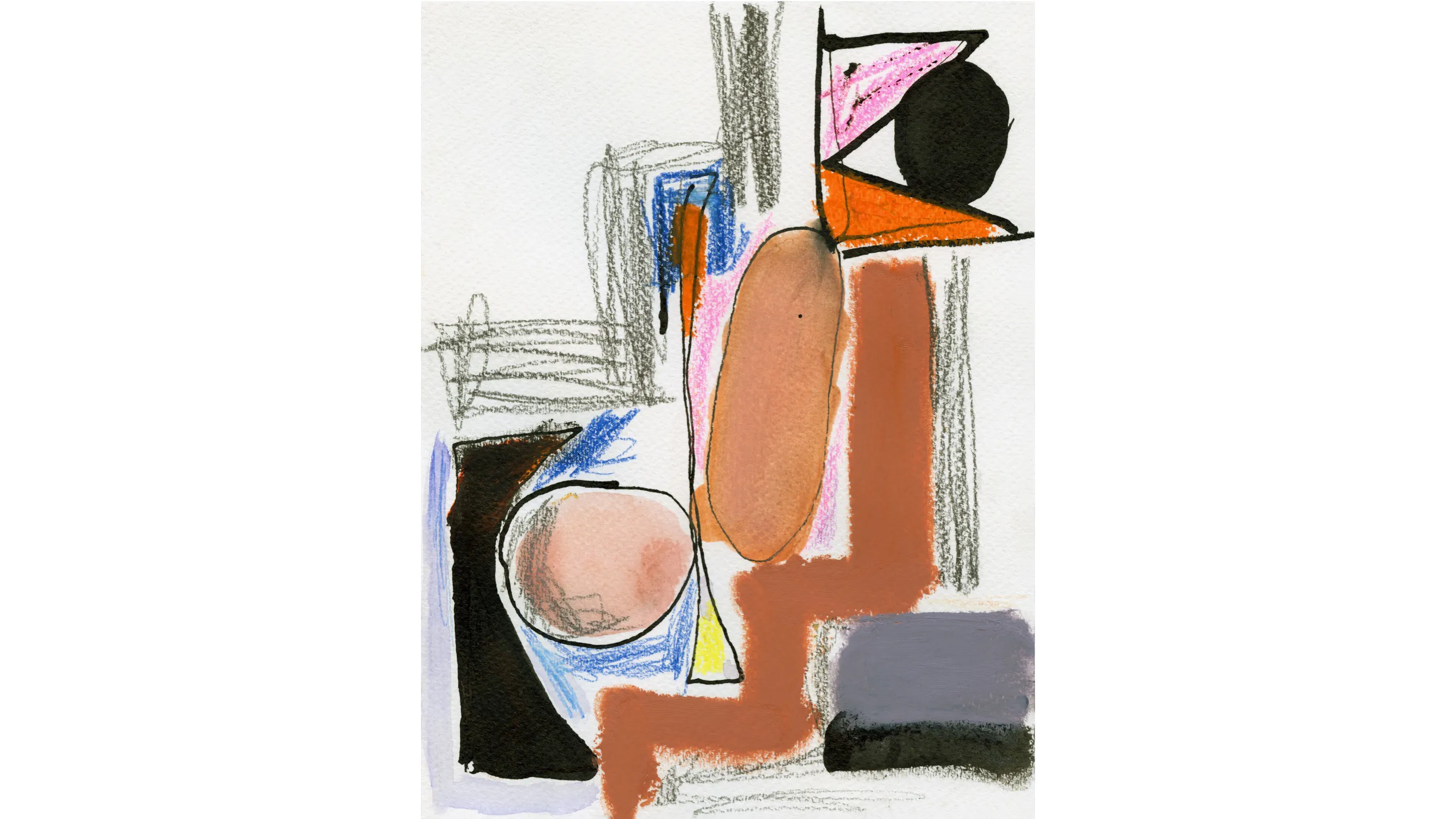
Until recently the chroniclers of walking, those who’ve fashioned our perceptions of the pursuit, have largely been white and male. This is as true for tales of more arduous, energetic, muscular walking as it is for contemplative, philosophical writing. Many of us are familiar with the tales of explorers from times past. Such figures roamed because they could, thanks to the privilege of race and station and might. Those who sought to acquire scientific and geographical knowledge, to forge new paths, to conquer, to colonize, to convert, did so freely.
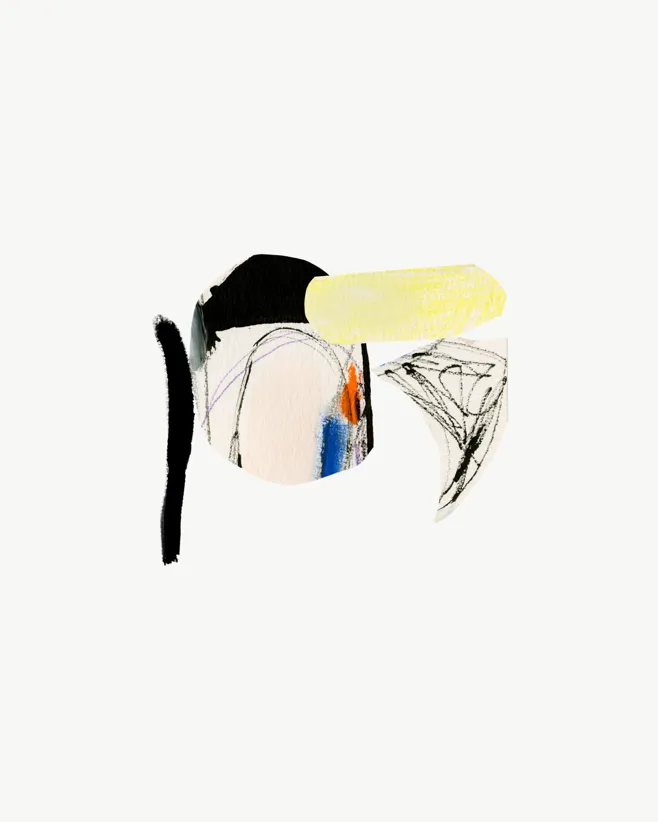
Andy Goldsworthy
Peoples encountered became reduced to Other, the backdrop to tales of derring-do, of trails forged, maps drawn, and miles walked. The dominant narrative has served to suppress voices and stories, infinite in their complexity. So, in writing anything about walking in all of its richness, we must bear in mind what Lauret Savoy, in Trace (her landmark memoir excavating landscape, identity, and memory) calls the “unvoiced presence of the past.”
We know of Shackleton, the patron saint of Antarctic explorers who marched across the mountains and glaciers of that continent, but far less about George Gibb, the first African American to set foot on the continent, or Mathew Henson, part of the first team to reach the North Pole. John Muir, the Scottish American founder of the Sierra Club, is embedded in the minds of outdoor lovers as a heroic figure of environmental activism and an ardent hiker who helped to preserve wilderness areas in America.
The world’s oldest and greatest walking culture hails from the Land Down Under. Indigenous Australians have walked “in country” for 50,000 years. According to traditional lore, in the era known as Dreamtime, ancestral beings emerged from the earth or sky, journeyed across the barren land, and created the features we recognize as mountains, hills, rivers, and streams, for example, as well as all living beings, including humans. Each path forged by an ancestor is known as a “songline.” If you know the songline of your ancestor, if you learned the stories and songs, you’d connect to your ancestral heritage, your “dreaming track.” At least this is how outsiders have interpreted what has been passed to us.

Satish Kumar
Walking is becoming a form of political resistance beyond the ages-old tradition of the march. These acts of walking increase visibility in outdoor spaces, assert land ownership and the right to roam, revive, and protect cultural heritage and teach traditional ways to the next generation so that they do not die out. Culturally speaking, they are exciting developments that enrich all of us. In 2017, for example, Colorado-based Navajo Jaylyn Gough founded Native Womens Wilderness, an organization that aims to amplify the voices of Native women in the outdoor realm. She launched a campaign that involved hiking to national parks, canyons, and rivers named after colonizers as a way of reclaiming ancestral heritage and of effecting healing.
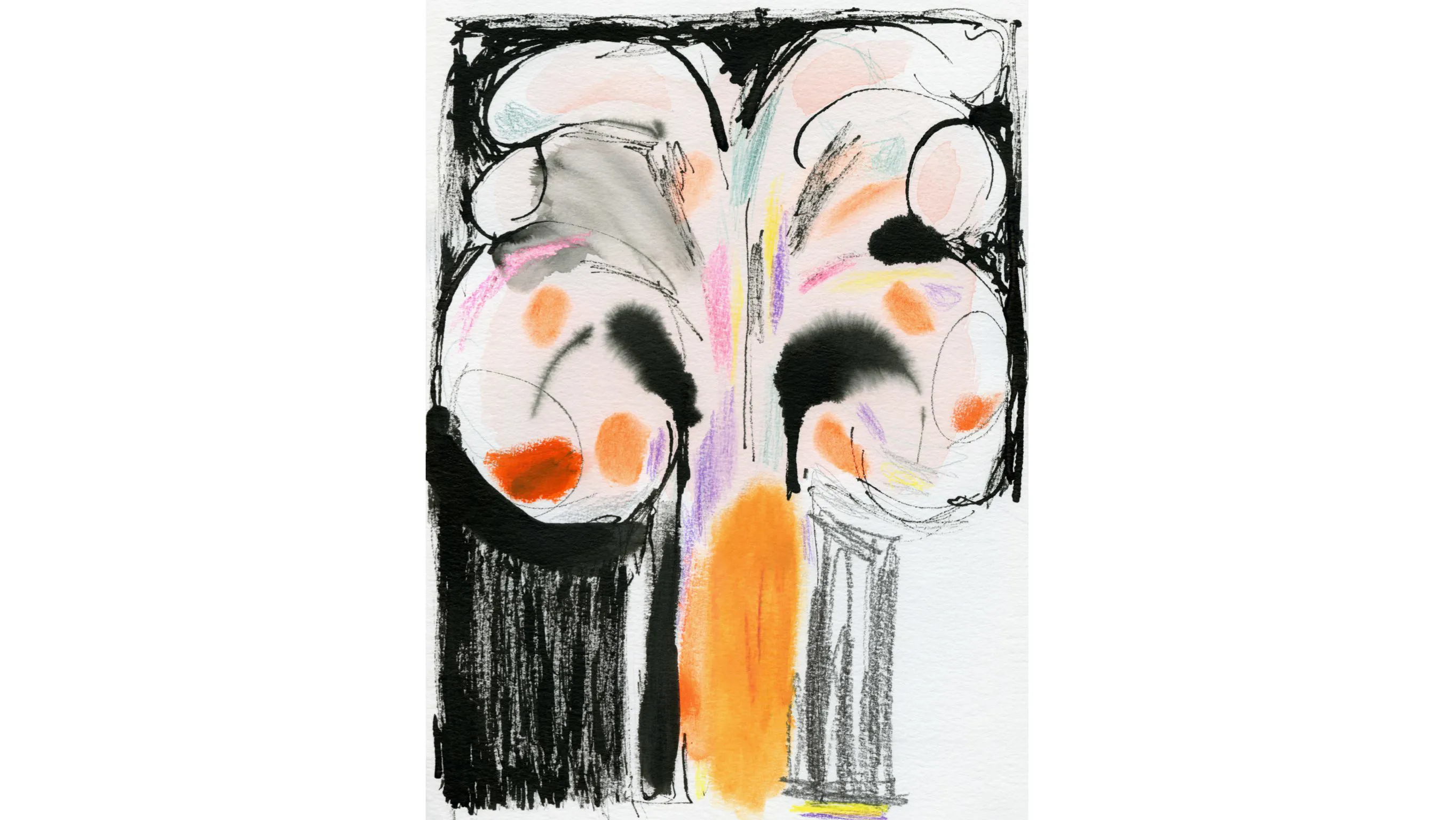
Today, divergent voices are revolutionizing walking culture with fresh stories and are beginning to alter mainstream Western perceptions of who walks. But what of the very places where we choose to amble, hike, and reflect? What of the landscapes we choose to walk through?
In lockdown, the texture of a day’s walking became a lottery dependent on the terrain at one’s doorstep: pavement or park, trailhead or coast. Yet fantasies of taking flight and walking the great trails of the world have persisted: often trekked routes in the Nepalese and Indian Himalayas, the glorious Swiss Alps, Britain’s South West Coast path, Namibia’s Fish River Canyon, or Japan’s Kumano Kodo, a UNESCO-recognized network of pilgrimage routes southwest of Kyoto, spring to mind.
Whatever our reasons for striking out, wondrous things happen when we walk, often when least expected. The riches yielded can be inversely proportional to the scope of journeys permitted—a delight in the macro, in the minute details of our surroundings, the tremor of leaves, a spider’s web glistening in the early light of day, the poetry of a murmuration, orgies of sunrises and sunsets, bright, powerful graffiti, landmarks spotted for the first time, or the joy of simply taking a left instead of a right.
We walk to shed pain and fear, to be heard and seen, to test ourselves, and to fuel our wanderlust. We walk to experience our bodies more fully, and to connect to the sacred, a most powerful incentive. Above all, walking is a container for a potent magic. It is a way of taking flight, while planting our feet firmly on the ground. Walking is power, a soft power that the world is embracing anew. It is an unexpected blessing in a time of great change, and it is one we can be grateful for.
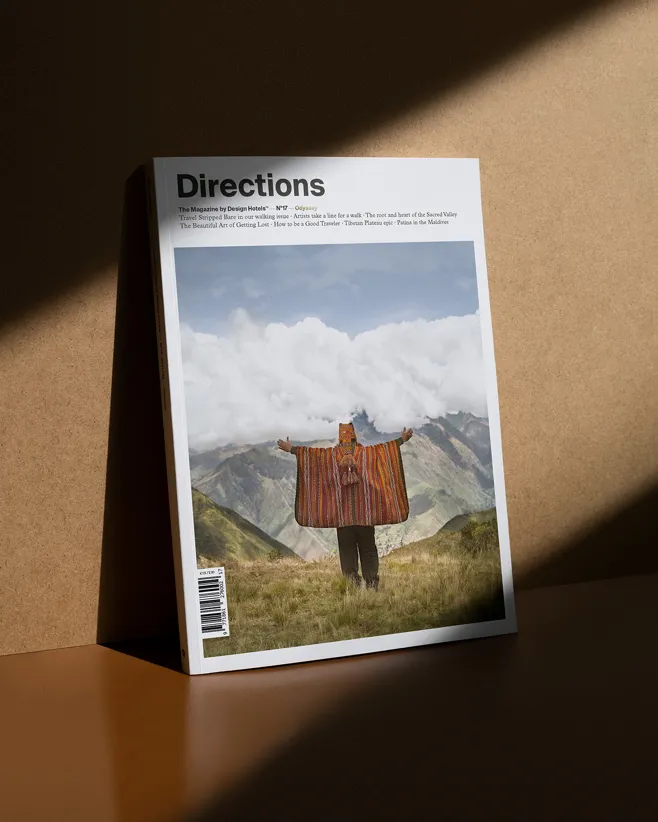
“Travel Stripped Bare’’ is an excerpt from an essay in the 2021 issue of Directions, our annual magazine that looks at movements in travel, art, design, food, and wellness. This year’s issue “Odyssey’’ explores the central theme of Walking by inviting a broad range of voices to take a conscious exploration of this simple act.